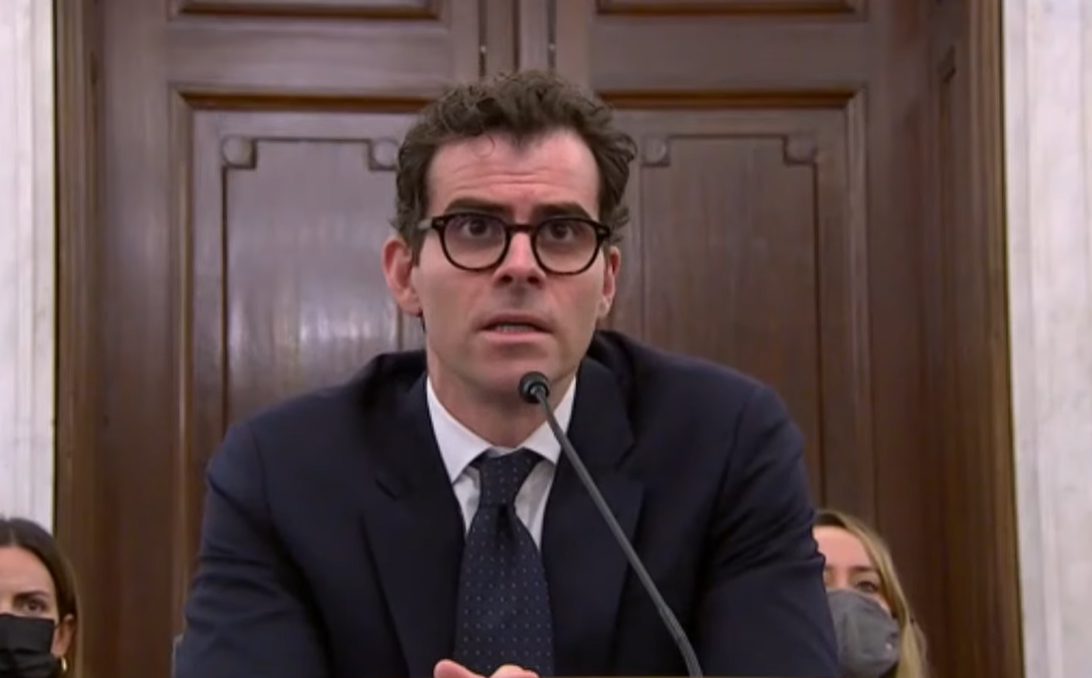Technologies
Instagram CEO testifies before Congress for the first time: 5 takeaways
US lawmakers expressed their distrust in the company even as the executive tried to assure them the company was committed to keeping young users safe.

Near the end of a more than two-hour congressional hearing, Sen. Marsha Blackburn gave Instagram CEO Adam Mosseri a chance to speak directly to parents whose children have been harmed by the platform.
«We’re not talking to people that have ever had any kind of response from Instagram and you have broken these children’s lives and you have broken these parents’ hearts,» Blackburn, a Tennessee Republican, told Mosseri on Wednesday.
«To any parent who’s lost a child or even had a child hurt themselves, I can’t begin to imagine what that would be like for one of my three boys. As the head of Instagram, it’s my responsibility to do all I can to keep people safe. I’ve been committed to that for years. I’m going to continue to do so,» Mosseri responded.
US lawmakers weren’t satisfied with Mosseri’s reply. The executive was testifying during a Senate hearing, titled «Protecting Kids Online: Instagram and Reforms for Young Users,» that focused on what Instagram, which is owned by Meta, knows about the impact of its service on young people. Mosseri’s testimony comes at an uncomfortable moment for Instagram and Facebook, which rebranded itself as Meta. Frances Haugen, a former Facebook product manager turned whistleblower, leaked a trove of internal research to Congress and the US Securities and Exchange Commission before leaving the company in May.
Lawmakers still don’t trust Instagram to self-regulate
Lawmakers kicked off the hearing by expressing their frustration that not much has changed to safeguard children online. In September, Antigone Davis, who runs Facebook’s global safety operations, appeared before the same subcommittee. The Senate panel also held a hearing in October about online child safety with executives from Snapchat, TikTok and Google-owned YouTube.
Sen. Richard Blumenthal, a Connecticut Democrat, said his office created a fake Instagram account on a Monday for a teenager and the user was still shown recommendations for eating disorder content. The example was one of several anecdotes lawmakers brought up to illustrate how enforcement of Instagram’s rules falls short.
«The resounding bipartisan message from this committee is legislation is coming. We can’t rely on trust anymore. We can’t rely on self policing. It’s what parents and our children are demanding,» he said.
Ahead of the hearing, Instagram also announced new tools, including a feature that reminds people to take a break from the platform, to demonstrate that the company is serious about the mental health of its users.
Blumenthal said the new safety tools Instagram released «fall way short of what we need» — and should have been released earlier.
Instagram pushes for the creation of an industry body
Mosseri told US lawmakers that keeping young people safe online is «not just about one company.» One idea he pushed during the hearing is the creation of an industry body to determine best practices for protecting young people online such as how to verify a user’s age and to build parental controls.
Citing a survey from Forrester, Mosseri also noted it appears that more teens are using short-form video app TikTok and Google-owned YouTube more than Instagram.
Companies like Instagram «should have to adhere to these standards» to earn protections under Section 230, a federal law that shields online platforms from liability for user-generated content, he said.
Sen. Ed Markey, a Massachusetts Democrat, and other lawmakers didn’t appear to support that idea.
«Your idea of regulation is an industry group creating standards that your company follows. That’s self regulation, that status quo and that just won’t cut it,» Markey said.
Instagram Kids isn’t permanently off the table
In September, Instagram said it was pausing the development of a version of the photo-sharing app for children under 13-years-old known as Instagram Kids. Instagram says the project is meant to give parents more control over the social media usage of kids between the ages of 10 to 12 years old who may already be on the app.
But the project raised concerns from child advocacy groups who say kids aren’t developmentally equipped to deal with the social comparison and mental health risks that come with being on Instagram.
During the hearing, Blumenthal asked if Mosseri would commit to permanently pause Instagram Kids. Mosseri said what he could commit to is that no child between the ages of 10 to 12 if the company ever managed to build Instagram Kids would have access to the «without their explicit parental consent.»
Teen accounts created on the web don’t default to private
Instagram said in July that users under the age of 16, or 18 in some countries, will have their accounts set to private by default.
Blackburn, though, pointed out her staff created a fake Instagram account for a 15-year-old girl but it defaulted as public not private.
«While Instagram is touting all these safety measures, they aren’t even making sure the safety measures are in effect,» she said.
Mosseri said accounts for teenagers created on a mobile device do default to private but that’s not the case when accounts are created on the web.
«We will correct that quickly,» he said.
Instagram could bring back the chronological feed next year
Mosseri said during the hearing he thinks users should have more control over their experience on Instagram, including the ability to view their feed chronologically. The company got rid of the chronological feed in 2016 and shows posts that users are more likely to be interested in based on activity such as what users «liked.»
Instagram is working on a way to pick the people users want to see at the top of their feed and a chronological version of Instagram.
«I wish I had a specific month to tell you right now, but right now we’re targeting the first quarter of next year,» Mosseri said.
Technologies
You Can Watch an Exclusive Avatar: Fire and Ash Scene on TikTok Right Now
Disney and TikTok partner on an immersive content hub for James Cameron’s latest movie about the alien Na’vi.
If you’re not quite ready to head to the theater to watch Avatar: Fire and Ash, an exclusive scene preview might sell you on the visual spectacle. As part of a new collaboration with the social media giant, Disney is posting snippets of its new movie to its TikTok account.
This scene isn’t part of any trailer and won’t be posted to other social media accounts, making TikTok the only place you can view it — unless you buy a movie ticket. A first look at the new movie’s scenes isn’t the only Avatar-related bonus on the social media platform right now, either. TikTok has partnered with the house of mouse to bring an entire «immersive content hub» to the app.
A special section of TikTok includes quizzes and educational videos that explore the alien world of Pandora shown off in the movies. On TikTok, you can take a personality quiz to find out what Na’vi clan you most closely align with and unlock a special profile picture border to use on your account.
Science and fiction blend together with a series of videos from real doctors who explain the basis for some of Avatar’s world-building. If you want to learn about exoplanets or how realistic the anatomy of the movie’s alien animals is, these videos will feed your brain while still providing entertainment value.
Perhaps the most enticing part of Disney’s latest social media collaboration is the opportunity for fans to win prizes and trips. TikTok creators who make edits with the #TikTokAvatarContest hashtag are entered into a competition to win Avatar merchandise. The biggest winners will be able to take a trip to visual effects studio Wētā Workshop in New Zealand or visit Avatar director James Cameron’s Lightstorm Entertainment Studio in Los Angeles.
Avatar: Fire and Ash is the third installment in director Cameron’s cinematic passion project. While the first Avatar movie was released in 2009, Cameron didn’t release another entry in the franchise until 2022. In total, there is a five-movie arc planned for the indigo alien Na’vi on the moon of Pandora.
The Avatar movies are known for pushing the boundaries of CGI visual effects in cinema. They are also historically big winners at the box office: the original Avatar is the highest-grossing film of all time, earning $2.9 billion across its theatrical releases. Its sequel, Avatar: The Way of Water, is the third-highest-grossing film of all time, trailing Avengers: Endgame. You can stream those movies on Disney Plus.
It remains to be seen whether Avatar: Fire and Ash will financially live up to its predecessors. The film currently has mixed reviews from critics on Rotten Tomatoes.
Technologies
Brain-Inspired Algorithms Could Dramatically Cut AI Energy Use
A new study dives into a major redesign for AI architecture.

One major issue facing artificial intelligence is the interaction between a computer’s memory and its processing capabilities. When an algorithm is in operation, data flows rapidly between these two components. However, AI models rely on a vast amount of data, which creates a bottleneck.
A new study, published on Monday in the journal Frontiers in Science by Purdue University and the Georgia Institute of Technology, suggests a novel approach to building computer architecture for AI models using brain-inspired algorithms. The researchers say that creating algorithms in this manner could reduce the energy costs associated with AI models.
«Language processing models have grown 5,000-fold in size over the last four years,» Kaushik Roy, a Purdue University computer engineering professor and the study’s lead author, said in a statement. «This alarmingly rapid expansion makes it crucial that AI is as efficient as possible. That means fundamentally rethinking how computers are designed.»
Don’t miss any of our unbiased tech content and lab-based reviews. Add CNET as a preferred Google source. Don’t miss any of our unbiased tech content and lab-based reviews. Add CNET as a preferred Google source.
Most computers today are modeled on an idea from 1945 called the von Neumann architecture, which separates processing and memory. This is where the slowdown occurs. As more people around the world utilize data-hungry AI models, the distinction between a computer’s processing and memory capacity could become a more significant issue.
Researchers at IBM called out this problem in a post earlier this year. The issue computer engineers are running up against is called the ‘memory wall.’
Breaking the memory wall
The memory wall refers to the disparity between memory and processing capabilities. Essentially, computer memory is struggling to keep up with processing speeds. This isn’t a new issue. A pair of researchers from the University of Virginia coined the term back in the 1990s.
But now that AI is prevalent, the memory wall issue is sucking up time and energy in the underlying computers that make AI models work. The paper’s researchers argue that we could try a new computer architecture that integrates memory and processing.
Inspired by how our brains function, the AI algorithms referred to in the paper are known as spiking neural networks. A common criticism of these algorithms in the past is that they can be slow and inaccurate. However, some computer scientists argue that these algorithms have shown significant improvement over the last few years.
The researchers suggest that AI models should utilize a concept related to SNNs, known as compute-in-memory. This concept is still relatively new in the field of AI.
«CIM offers a promising solution to the memory wall problem by integrating computing capabilities directly into the memory system,» the authors write in the paper’s abstract.
Medical devices, transportation, and drones are a few areas where researchers believe improvements could be made if computer processing and memory were integrated into a single system.
«AI is one of the most transformative technologies of the 21st century. However, to move it out of data centers and into the real world, we need to dramatically reduce its energy use,» Tanvi Sharma, co-author and researcher at Purdue University, said in a statement.
«With less data transfer and more efficient processing, AI can fit into small, affordable devices with batteries that last longer,» Sharma said.
Technologies
Today’s NYT Connections: Sports Edition Hints and Answers for Dec. 17, #450
Here are hints and the answers for the NYT Connections: Sports Edition puzzle for Dec. 17, No. 450.

Looking for the most recent regular Connections answers? Click here for today’s Connections hints, as well as our daily answers and hints for The New York Times Mini Crossword, Wordle and Strands puzzles.
Today’s Connections: Sports Edition is pretty challenging. How well do you know French soccer? If you’re struggling with today’s puzzle but still want to solve it, read on for hints and the answers.
Connections: Sports Edition is published by The Athletic, the subscription-based sports journalism site owned by The Times. It doesn’t appear in the NYT Games app, but it does in The Athletic’s own app. Or you can play it for free online.
Read more: NYT Connections: Sports Edition Puzzle Comes Out of Beta
Hints for today’s Connections: Sports Edition groups
Here are four hints for the groupings in today’s Connections: Sports Edition puzzle, ranked from the easiest yellow group to the tough (and sometimes bizarre) purple group.
Yellow group hint: Put it on your noggin.
Green group hint: Goes before a division of the year.
Blue group hint: French football.
Purple group hint: Think Louisville Slugger.
Answers for today’s Connections: Sports Edition groups
Yellow group: Headgear.
Green group: Prefixes to -season.
Blue group: Ligue 1 teams.
Purple group: Batting ____.
Read more: Wordle Cheat Sheet: Here Are the Most Popular Letters Used in English Words
What are today’s Connections: Sports Edition answers?
The yellow words in today’s Connections
The theme is headgear. The four answers are cap, hat, mask and visor.
The green words in today’s Connections
The theme is prefixes to -season. The four answers are mid, off, post and pre.
The blue words in today’s Connections
The theme is Ligue 1 teams. The four answers are Lens, Marseille, Nice and PSG.
The purple words in today’s Connections
The theme is batting ____. The four answers are average, gloves, practice and stance.
Don’t miss any of our unbiased tech content and lab-based reviews. Add CNET as a preferred Google source.
-

 Technologies3 года ago
Technologies3 года agoTech Companies Need to Be Held Accountable for Security, Experts Say
-

 Technologies3 года ago
Technologies3 года agoBest Handheld Game Console in 2023
-

 Technologies3 года ago
Technologies3 года agoTighten Up Your VR Game With the Best Head Straps for Quest 2
-

 Technologies4 года ago
Technologies4 года agoBlack Friday 2021: The best deals on TVs, headphones, kitchenware, and more
-

 Technologies4 года ago
Technologies4 года agoVerum, Wickr and Threema: next generation secured messengers
-

 Technologies4 года ago
Technologies4 года agoGoogle to require vaccinations as Silicon Valley rethinks return-to-office policies
-

 Technologies4 года ago
Technologies4 года agoOlivia Harlan Dekker for Verum Messenger
-

 Technologies4 года ago
Technologies4 года agoiPhone 13 event: How to watch Apple’s big announcement tomorrow
